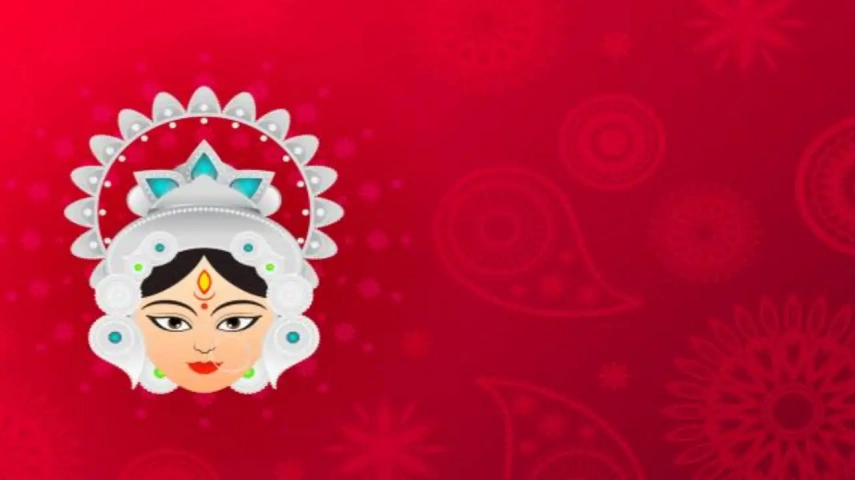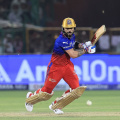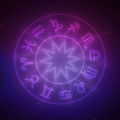Everything you must know about Navratri 2022: Dates, Diet, Dos and Don’ts
Right from Navratri dates 2022, Navratri Diet to Navratri Dos and Don’ts, Ahead you will find everything you must know about Navratri 2022.

Navratri is one of the most cherished Hindu festivals that’s celebrated across the country for nine days. The lavish spirit and grandeur of Navratri celebrations across all the Indian states are certainly worth watching. The festive season marks its beginning with the Shardiya Navratri which is meant to celebrate and worship nine avatars of Maa Durga on nine different days. This year, the first day of the Shardiya Navratri is on September 26, 2022, which marked the beginning of Navratri. As per the Hindu Calender, Shardiya Navratri begins on the Pratipada date of the Shukla Paksha of the Ashwin month. Also, Durga Puja and Dussehra will be celebrated after the nine days. Right from Navratri dates 2022, Navratri Diet to Navratri Dos and Don’ts, Ahead you will find everything you must know about Navratri 2022.
Navratri 2022 Dates
Navratri 2022 starts September 26, 2022, Monday and will end on October 04, 2022, Tuesday with Dusshera or Vijaya Dasami celebration.
Durga Puja 2022 Dates

The final or last day of Navaratri is when the Durga Puja celebration begins. The day is marked with the submerging of the idol of Maa Durga into rivers as a token of her respect and devotion. Durga Puja 2022 will be celebrated from October 1 to October 5, this year.
Navratri 2022: Complete Calendar
- Navratri 2022 Day 1 (September 26, 2022, Monday): On the first day of Navratri, Goddess Shailputri is worshipped.
- Navratri 2022 Day 2 (September 27, 2022, Tuesday): On the second day of Navratri, Goddess Brahmacharini Devi is worshipped.
- Navratri 2022 Day 3 (September 28, 2022, Wednesday): On the third day of Navratri, Goddess Chandraghanta is worshipped.
- Navratri 2022 Day 4 (September 29, 2022, Thursday): On the fourth day of Navratri, Goddess Kushmanda is worshipped.
- Navratri 2022 Day 5 (September 30, 2022, Friday): On the fifth day of Navratri, Goddess Skandamata is worshipped.
- Navratri 2022 Day 6 (October 1, 2022, Saturday): On the sixth day of Navratri, Goddess Katyayani is worshipped.
- Navratri 2022 Day 7 (October 2, 2022, Sunday): On the seventh day of Navratri, Goddess Kalratri is worshipped.
- Navratri 2022 Day 8 (October 3, 2022, Monday): On the eighth day of Navratri, Goddess Mahagauri is worshipped as Durga Ashtami is celebrated.
- Navratri 2022 Day 9 (October 4, 2022, Tuesday): On the ninth day of Navratri, the long fast is broken and Goddess Siddhidhatri is worshipped. The day is celebrated as Maha Navami 2022.
- Navratri 2022 Day 10 (October 5, 2022, Wednesday): On the tenth day, all the idols of Goddess Durga are immersed in water and the day is marked as Dussehra 2022.
Why is Navratri celebrated in October?
Despite being one of the biggest annual Hindu festivals where the entire country comes together to celebrate Navratri, a lot of us don’t really know why the festival is celebrated and why is it celebrated between the end of September and early October. Here’s all you need to know.
The Importance of Navratri

Navratri 2022 is just around the corner and it is just a matter of days before the entire country starts celebrating the auspicious festival. Every day of this nine-day-long festival is dedicated to different Indian Goddesses. In fact, every day of Navratri has a different color of importance. Apart from that, Navratri celebrations incorporate fasting, cooking delicious Satvik Navratri special recipes, and meeting families and friends. But, why do we celebrate Navratri? What is the significance of this grand Indian Festival?
The name of the nine-day festival, Navratri derives from the Sanskrit words - Nava meaning nine, and Ratri meaning night. According to age-old Hindu mythology, the Navratri stands as the testimony to good over evil. The Hindu traditions explain that Goddess Durga fought a demon named Mahishasur for nine whole days and finally beheaded him on the tenth day. That is certainly why the final or the tenth day is marked as Vijaydashmi or Dussehra. Apart from the above-mentioned deities, Lord Ganesha, Goddess Saraswati, Goddess Lakshmi, and Lord Karthikeya are also worshipped during these ten auspicious days.
Navratri Colors 2022

Although Navratri celebrations are filled with many beautiful rituals, dedicating specific colors to each day has to be the most unique way of celebrating Navratri. Each day of Navratri has a special color dedicated day which affects the outfits and floral decorations of each day, here is the list.
Day 1 - September 26 - White
Day 2 - September 27 - Red
Day 3 - September 28 - Royal Blue
Day 4 - September 29 - Yellow
Day 5 - September 30 - Green
Day 6 - October 1 - Grey
Day 7 - October 2 - Orange
Day 8 - October 3 - Peacock Green
Day 9 - October 4 - Pink
Navratri 2022: The list of foods to eat and avoid during your Navratri Fast
26th of September 2022, Monday marks the beginning of Shardiya Navratri 2022 which will be the first day of fasting for all the Goddess Durga devotees across the country. Fasting and incorporating a satvik diet is one of the major parts of Navrati celebrations. So, what does a satvik diet include? Here is a list of foods you must eat and avoid during the Shardiya Navratri 2022 celebrations.
What to avoid? Food items to avoid during Navratri 2022
The satvik diet followed during Navratri is a simple vegetarian diet that refrains from vegetables like onion, garlic, okra, brinjal, and mushrooms. If you are fasting this Navratri season there are several vrat-friendly flours, vegetables, fruits, and spices you can consume however, you must steer clear from wheat, rice, semolina, maida, corn flour, legumes, and pulses. Here is a list of food items that are strictly prohibited during Navrati celebrations
1. Garlic and onion: Since Navratri celebrations are all about Satvik diet, it is advised to steer clear from tamasic foods like onion, garlic, mushrooms, leeks, and shallots.
2. Wheat, rice: While your daily diet might incorporate wheat, rice, refined flour, suji, and corn flour, along with legumes and pulses, they should be avoided if you are fasting during the Navratri season.
3. Salt: Spices like regular salt, turmeric, coriander powder, and mustard seeds are also avoided in Navratri fasts.
4. Alcohol, eggs, meat: Most importantly, whether you are fasting or not, Navrati celebrations strictly prohibits the consumption of alcohol, eggs, or any kind of meat.
What to eat? Vrat-friendly food items for Navratri

Some devotees fast for the complete nine days while others observe their fasts for the first two and the last two days of the Navratri Celebration. The different food items that can be consumed during Navratri fasts include, samvat ke chawal (banyard millet), kuttu ka aata (buckwheat flour), sabudana or sago, rajgira, singhare ka aata (water chestnut flour) along with vegetables like potatoes, sweet potatoes, bottle gourd, arbi, pumpkin, spinach, cucumber, and carrots.
Apart from these, here is an extensive list of food items you can eat during Navratri fast 2022.
1. Milk and milk products: During Navratri fasts, milk can be consumed in all its forms. You can go for milk-based shakes and smoothies or you can explore different types of milk products like curd, yogurt, buttermilk, or even different raitas recipes in your meals. The best part of milk and dairy-based products is they are probiotics and keep your energy levels high when you cut down on various food items you normally consume. Apart from that, you can also incorporate ghee and paneer into your diet to beat those little hunger pangs.
2. Vegetables and fruits: When it comes to vegetables and fruits, you can consume potatoes, sweet potato, bottle gourd, taro root (arbi), pumpkin, spinach, bottle gourd, cucumber, carrots, and all kinds of fruits to keep a regular dose of important vitamins, minerals, and antioxidants in your diet.
3. Flours: When you are fasting during Navratris, you can consume a number of flours like Samvat ke chawal (banyard millet), kuttu ke aata (buckwheat flour), sabudana or sago, rajgira, and singhare ka aata (water chestnut flour.) All these flours can be easily used to make chapatis, pooris, or fritters.
4. Salts and spices: When you give up on regular salt and several spices, you can continue to consume sendha namak or rock salt along with common spices like cumin, clove, and cinnamon.
5. Nuts and dry fruits: Whether it's walnuts, almonds, dates, pistachios, and raisins you can incorporate everything into your Navratri diet. In fact, if you are fasting dry fruits serve as an important storehouse of proteins, vitamins as well as minerals.
How a Satvik diet during Navratri can maximize your overall health?
As they say, you are what you eat, the Indian scriptures also mention ‘Jaisa aan vaisa mann or tann.’ This clearly signifies, the kind of food you eat strongly influences your mind and your body. The kind of food you incorporate not only affects your digestion but impacts how you feel and think as well. This is exactly why fasts during Navratri can establish a balance between mind and body and can even promote stress management and detoxification.
While the diet during Navratri has several restrictions, the is a wide variety of food items you can actually consume. A number of people neglect the fasts as outdated religious beliefs, however, there is legit logic behind every restriction. In fact, a Satvik diet during Navratri can maximize your overall health. If you focus on the kinds of food people are advised to eat during Navratris it includes gluten-free whole grains along with healthful fruits and vegetables. Experts claim, the intake of these food items and restricting gluten for a few days have miraculous effects on the body. Not only does it detoxify the body, but it also supplies all the vital nutrients as well.
Also, it is important to remark on the fact that both the Navtrais fall during major seasonal shifts. These few days of seasonal shifts are prime time for seasonal allergies and flu. The best part is the Navratri diet is carefully concocted to strengthen the immune system to offer utmost protection from flu. Other benefits that a satvik diet offers are
- Detoxifies the body
- Reduces stress
- Boosts overall digestion
- Enhances mood and improves metabolism
Navratri fast rules 2022
Here is a list of 10 quick dos and dont’s during the Navratri celebrations which is a nine-day Hindu festival celebrated with much magnificence by Hindus across the world.
- Avoid getting haircuts or cutting nails during Navratri celebrations.
- Steer clear from any kind of non-vegetarian food or tamasic food items.
- Stay away from alcohol or any other substance abuse.
- Avoid using regular salt and instead, use rock salt for the preparation of dishes.
- Refrain from any seed-based oils and go for pure ghee, butter, or peanut oil.
- Try avoiding wheat and rice and pick flours like Kuttu ka atta, Singhade ka atta, amaranth flour, Barnyard millet/Bajra, and Sabu dana for chapatis and other preparations.
- Go for light dishes like pulao, khichdi, and dhoklas.
- Prepare milk or curd-based dishes to incorporate protein into your diet.
- Skip rice flour, all-purpose flour, cornflour, lentils, and semolina.
- Avoid onion and garlic.
- Try to stay hygienic and clean. It is advised to shower every day before you prepare the prasad for the day.
- Try to keep the surroundings clean and hygienic to attract abundance and prosperity.
- It is advised to do Kalash Sthapana or Ghatasthapana on the first day of Navratri.
Shardiya Navratri 2022 will be celebrated with great zeal by Hindus living all across the world. In different parts of India, Navratris are celebrated in different and unique ways. In Northern states of India, Navratri celebrations are celebrated in a grand way. Devotees fast and avoid any kind of tamsik food items for nine whole days. The believers also light an akhand diya. People cook festive delicacies like halwa, puri, and chana are made. Young girls are invited for a meal and worshipped as an avatar or Goddess Durga.
In Western states, the Navratri celebrations are famously known for Dandiya Rass and Garba events. People enjoy the festival with great pomp and show with huge dance festivals that last nine nights. The dance events include bright and colorful costumes. Devotees dance for long hours as a way of celebrating the win of good over evil which is definitely worth watching.

In Eastern states, Navratri celebrations are popularly known as Durga Puja. The Durga puja festivities harbor tremendous devotion. The Eastern states are known for large exquisite clay idols of Goddess Durga that depict her slaying the Mahishasura. The idols are glorified and worshipped for five days, starting from Panchami. Unlike Noth India, Navratri celebrations here do not include fasting. They in fact include delectable sweets and several other dishes.
In Southern states of India the elephants, camels, and horses carrying royal swords are worshipped. Karnataka is famous for the Ayudh puja celebration which incorporates worshiping tools that help in earning the livelihood like books, pens, computers, ploughs, agricultural tools, machinery, cars, and trucks which are decorated and worshipped. Telangana on the other hand is famous for the Bathukamma festival wherein Goddess Kali, Goddess Lakshmi, and Goddess Saraswati are worshiped for nine days.

While there might be different customs and rituals in each state of India, Navratri holds the power to bind all the Hindus across the world for a nine-day-long celebration that celebrates the victory of good over evil. This year, Navratri 2022 will start on September 26, 2022, Monday and will end on October 04, 2022, Tuesday with Dusshera or Vijaya Dasami celebration.
Also read: Navratri 2022: Samantha to Rashmika Mandanna, celeb-approved guide for the festival
Rejuvenate your body and mind with these fasting tips for Navratri
THESE are the 9 different colours of Navratri and their significance





 JOIN OUR WHATSAPP CHANNEL
JOIN OUR WHATSAPP CHANNEL







































































































